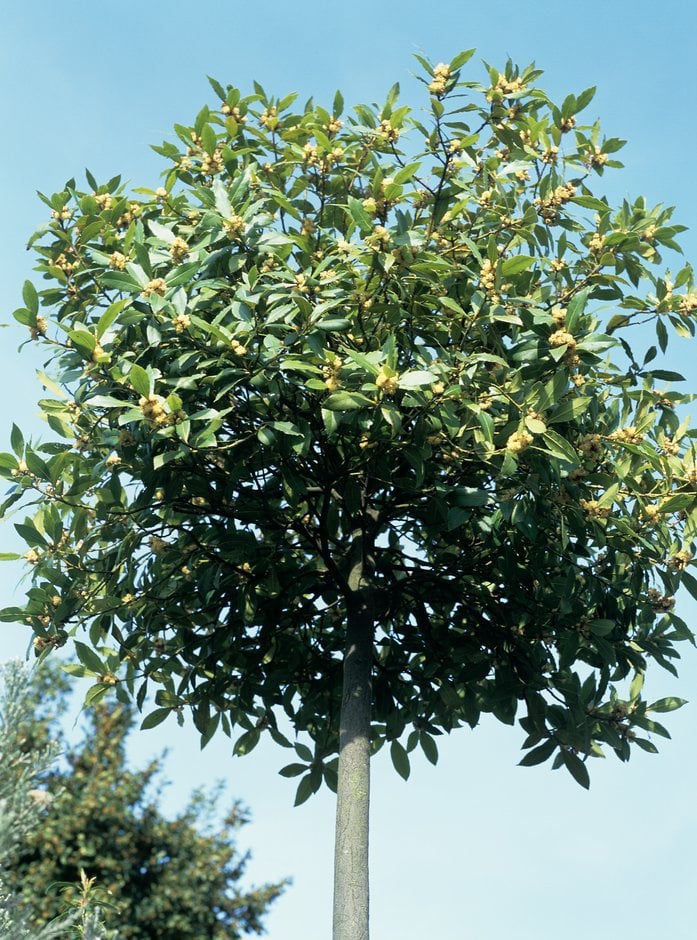Laurus nobilis

bay tree
A large, erect, evergreen shrub with aromatic, narrowly ovate, leathery, glossy leaves up to 10cm long and 2-4cm wide. Dried or fresh leaves are popular flavouring in meal preparation. Flowers are 5mm small, pale greenish-yellow, in dense clusters. Fruits are oval berries 1.5 cm in diameter, glossy black when ripe
Other common names
baybay laurel
see morepoet's laurel
Roman laurel
royal bay
sweet bay
true laurel
victor's laurel
Size
Ultimate height
8–12 metresTime to ultimate height
20–50 yearsUltimate spread
Wider than 8 metresGrowing conditions
Moisture
Well–drainedpH
Acid, Alkaline, NeutralColour & scent
| Stem | Flower | Foliage | Fruit | |
| Spring | Green Yellow | Green | ||
|---|---|---|---|---|
| Summer | Green | |||
| Autumn | Green | Black | ||
| Winter | Green |
Position
- Full sun
- Partial shade
Aspect
South–facing or North–facing or West–facing or East–facing
Exposure
Exposed or Sheltered Hardiness
H4Botanical details
- Family
- Lauraceae
- Native to GB / Ireland
- No
- Foliage
- Evergreen
- Habit
- Bushy
- Potentially harmful
- Fruit are ornamental - not to be eaten. Wear gloves and other protective equipment when handling Pets: Fruit are ornamental - not to be eaten - see the HTA guide to potentially harmful plants for further information and useful contact numbers
- Genus
Laurus are dioecious evergreen trees or large shrubs, with leathery aromatic leaves, and small yellow flowers followed on female plants by black berries
- Name status
Correct
- Plant range
- Mediterranean
How to grow
Cultivation
Grows well in a container. Prefers a well-drained soil in sun or partial shade. Follow bay tree cultivation for more advice
Propagation
Propagate by seed, layering or semi-hardwood cuttings
Suggested planting locations and garden types
- City and courtyard gardens
- Coastal
- Cottage and informal garden
- Mediterranean climate plants
- Patio and container plants
- Wildlife gardens
- Low Maintenance
- Hedging and screens
Pruning
Pests
May be susceptible to bay sucker, horse chestnut scale, soft scale and tortrix moth
Diseases
May be susceptible to powdery mildews, a leaf spot and honey fungus (rarely)
Love gardening
Sign up to receive regular gardening tips, inspiration, offers and more
View our Privacy Policy
Get involved
The Royal Horticultural Society is the UK’s leading gardening charity. We aim to enrich everyone’s life through plants, and make the UK a greener and more beautiful place.

